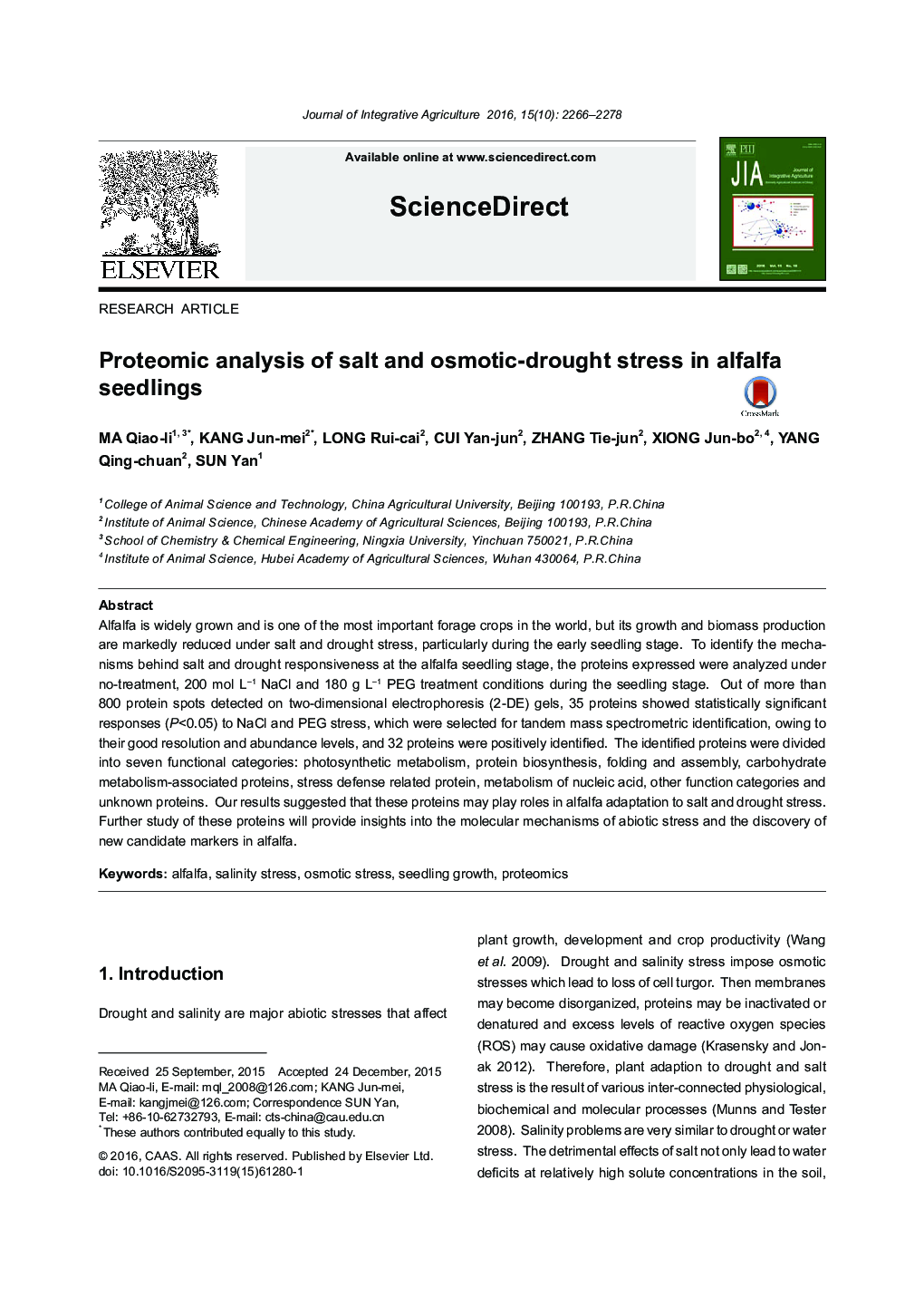| کد مقاله | کد نشریه | سال انتشار | مقاله انگلیسی | نسخه تمام متن |
|---|---|---|---|---|
| 4494059 | 1623716 | 2016 | 13 صفحه PDF | دانلود رایگان |
Alfalfa is widely grown and is one of the most important forage crops in the world, but its growth and biomass production are markedly reduced under salt and drought stress, particularly during the early seedling stage. To identify the mechanisms behind salt and drought responsiveness at the alfalfa seedling stage, the proteins expressed were analyzed under no-treatment, 200 mol L−1 NaCl and 180 g L−1 PEG treatment conditions during the seedling stage. Out of more than 800 protein spots detected on two-dimensional electrophoresis (2-DE) gels, 35 proteins showed statistically significant responses (P<0.05) to NaCl and PEG stress, which were selected for tandem mass spectrometric identification, owing to their good resolution and abundance levels, and 32 proteins were positively identified. The identified proteins were divided into seven functional categories: photosynthetic metabolism, protein biosynthesis, folding and assembly, carbohydrate metabolism-associated proteins, stress defense related protein, metabolism of nucleic acid, other function categories and unknown proteins. Our results suggested that these proteins may play roles in alfalfa adaptation to salt and drought stress. Further study of these proteins will provide insights into the molecular mechanisms of abiotic stress and the discovery of new candidate markers in alfalfa.
Journal: Journal of Integrative Agriculture - Volume 15, Issue 10, October 2016, Pages 2266–2278
